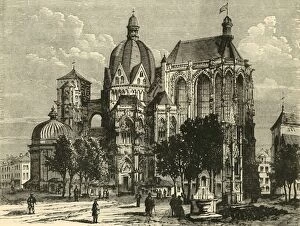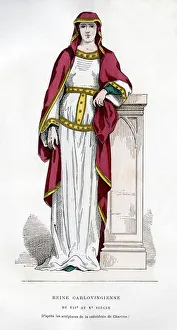Carlovingian Collection
Carlovingian, a term that evokes the grandeur and artistic richness of the Carolingian Empire
All Professionally Made to Order for Quick Shipping
Carlovingian, a term that evokes the grandeur and artistic richness of the Carolingian Empire. From exquisite gospel books to intricate plaques, this era produced masterpieces that continue to captivate us today. One such masterpiece is St. Mark from the Godescalc Gospel Lectionary, created between 781-783 by the talented artist Godescalc. The vibrant colors and meticulous details bring this saint to life, showcasing the skill and devotion of its creator. In contrast, The Wild Man or the Masquerade of Orson and Valentine transports us to a different world altogether. Created in 1566 by an unknown artist, this enigmatic piece captures our imagination with its mysterious subject matter. Moving on to Roundel with a Personification of the Moon from around 860-890, we witness another example of Carolingian artistry. This celestial depiction showcases their fascination with symbolism and personification. Plaques also played a significant role in Carolingian art. Christ enthroned with two Apostles (850-875) exudes divine majesty while Plaque with Enthroned Virgin and Child (850-875) emanates maternal tenderness - both creations leaving lasting impressions on those who behold them. The Situla (Bucket for Holy Water), crafted between 860-880, demonstrates how even everyday objects were transformed into works of art during this period. Its intricate design reflects not only practicality but also aesthetic sensibilities. Vessel Cover from around 830-850 exemplifies fine craftsmanship combined with religious motifs - a testament to the spiritual significance embedded within every aspect of Carolingian culture. Another remarkable plaque portrays the Virgin Mary as a Personification of the Church (ca. 800-825). This representation highlights her central role in Christian belief while emphasizing unity within medieval society under Charlemagne's rule. Gospel Book dating back to approximately 825-50 showcases the meticulousness of Carolingian scribes.




























